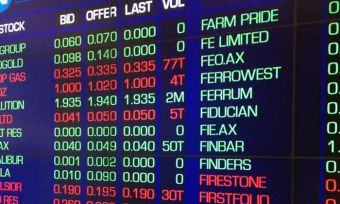If you’ve got money set aside and you’re looking to make it grow more effectively, it may be worthwhile looking into investing. What are some of your options?
The best ways to invest money in Australia
Generally, you could generate returns in any of the four different groups of investments known as asset classes. These are:
- Equities
- Cash
- Property
- Fixed Income
The performance of these different assets can vary significantly over time, with the theory being that those with a greater level of risk should generally perform better over the long term, compared to those investments with a lower level of risk. We look at the different asset classes and assess their long-term performance in Australia. Could looking at how each asset class has performed help you decide where to put your money? While assessing performance is natural when investing, past performance is not a reliable indicator of future performance.
→ Related: 5 simple steps to building wealth
Equities e.g. shares
Depending on the specific equities you choose, buying equities such as publicly-listed shares can provide high returns, but can also provide significant losses, hence it may be considered a risky asset class. Shares are vulnerable to sudden fluctuations in price that can result in big gains or losses in the value of your investment.
According to Vanguard Index Report, Australian shares averaged 9.8% in gross returns per annum over thirty years to June 2022. This makes it the second-highest-returning Australian asset class out of the four. But don’t forget, this period of time encompasses the economic downturn caused by COVID-19 pandemic.
Keep in mind that past performance is not a reliable indicator of future performance and great care is needed when making share selections. Many people pay an experienced investment adviser to do this for them.
If you’re comparing Online Share Trading companies, the comparison table below displays some of the companies available on Canstar’s database with links to the company’s website. The information displayed is based on an average of 6 trades per month. Please note the table is sorted by Star Rating (highest to lowest) followed by provider name (alphabetical). Use Canstar’s Online Share Trading comparison selector to view a wider range of Online Share Trading companies.
Property
As reported in the Vanguard Index Report, Australian listed property averaged 12.91% in gross returns per annum over ten years to June 2021. In 2020, Australia’s property market struggled through the pandemic, however in 2021 it rebounded in a big way, returning 33.2%.
Investing in property can be very expensive and hard to get into depending on your financial situation and where you are looking to buy, but for many, it is a favoured asset class; property is part of the ‘great Australian dream’.
Of course, the property market has its ups and downs, so it’s important to pick the right area at the right time.
Compare Home Loans with Canstar
Lowest interest rates for 1-year fixed home loans
The comparison table below displays some of the 1 year fixed rate investment home loan products on Canstar’s database with links to lenders’ websites available for a loan amount of $350,000 at 80% LVR in NSW, and available for Principal and Interest repayments. The results are sorted by comparison rate (lowest to highest), then by provider name (alphabetically). Before committing to a particular home loan product, check upfront with your lender and read the applicable loan documentation to confirm whether the terms of the loan meet your needs and repayment capacity. Use Canstar’s home loans comparison selector to view a wider range of home loan products. Canstar may earn a fee for referrals.
*Comparison rate based on loan amount of $150,000. Read the Comparison Rate Warning.
Lowest interest rates for 3-year fixed home loans
The comparison table below displays some of the 3 year fixed rate investment home loan products on Canstar’s database with links to lenders’ websites available for a loan amount of $350,000 at 80% LVR in NSW, and available for Principal and Interest repayments. The results are sorted by comparison rate (lowest to highest), then by provider name (alphabetically).Before committing to a particular home loan product, check upfront with your lender and read the applicable loan documentation to confirm whether the terms of the loan meet your needs and repayment capacity. Use Canstar’s home loans comparison selector to view a wider range of home loan products. Canstar may earn a fee for referrals.
*Comparison rate based on loan amount of $150,000. Read the Comparison Rate Warning.
Lowest interest rates for 5-year fixed home loans
The comparison tables below displays some of the 5 year fixed rate investment home loan products on Canstar’s database with links to lenders’ websites available for a loan amount of $350,000 at 80% LVR in NSW, and available for Principal and Interest repayments. The results are sorted by comparison rate (lowest to highest), then by provider name (alphabetically).Before committing to a particular home loan product, check upfront with your lender and read the applicable loan documentation to confirm whether the terms of the loan meet your needs and repayment capacity. Use Canstar’s home loans comparison selector to view a wider range of home loan products. Canstar may earn a fee for referrals.
*Comparison rate based on loan amount of $150,000. Read the Comparison Rate Warning.
Fixed income e.g. bonds
Fixed income assets, such as government and corporate bonds are often seen as providing a relatively stable and reliable return. When purchasing a government bond, you are essentially lending money to the government which they will pay you back with interest. This interest is paid to you in regular instalments throughout the length of the bond.
In the aforementioned Vanguard Index report, Australian bonds averaged 5.02% in gross returns per annum over 10 years. Although, fixed income assets could be considered boring by some investors, having them as part of your investment portfolio can help to offset any losses you may have had from the share market – hence their classification as a ‘defensive’ asset.
Related Article: 4 Ways to Buy Investment Bonds
Cash e.g. savings accounts
Cash assets, such as savings accounts and term deposits, are the most liquid of all the asset classes. That is, they can be most readily converted to cash – hence the name of the asset class. Cash is the safest form your money can take but it typically generates the lowest returns. In Australia, cash averaged 2.2% in gross returns per annum over 10 years, according to the Vanguard Index Report.
In 2020, we saw the RBA cut the cash rate to an all-time low so interest rates may seem unappealing at this time, but it can be good to have some cash in a bank account because of the safety it provides and because you can access it right away when you need it. Bear in mind, though, that some providers of term deposits or savings accounts may charge a fee or reduce the interest they pay you if you decide to withdraw your money earlier than expected.
The comparison table below shows some of the Savings Accounts on Canstar’s database for a regular saver in NSW. The results shown are based on an investment of $100,000 in a personal savings account and are sorted by Star Rating (highest to lowest), then provider name (alphabetically). For more information and to confirm whether a particular product will be suitable for you, check upfront with your provider and read the Product Disclosure Statement before making a decision.
Image source: ITTIGallery/Shutterstock.com
This is an update of an article originally published by Dominic Beattie.







Share this article